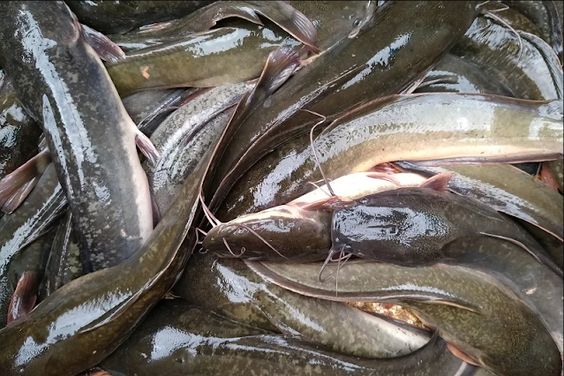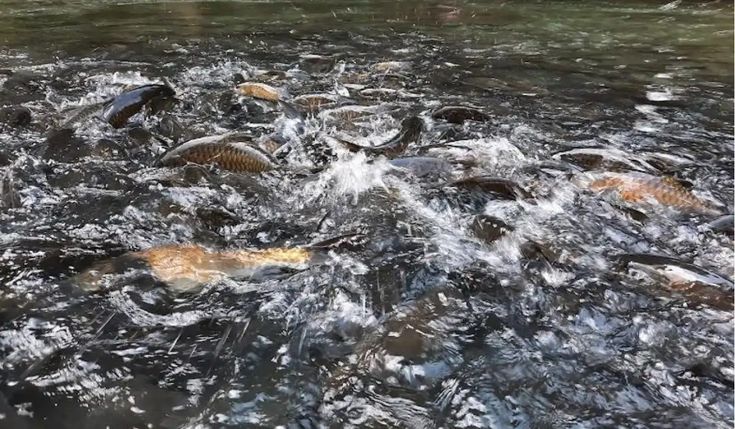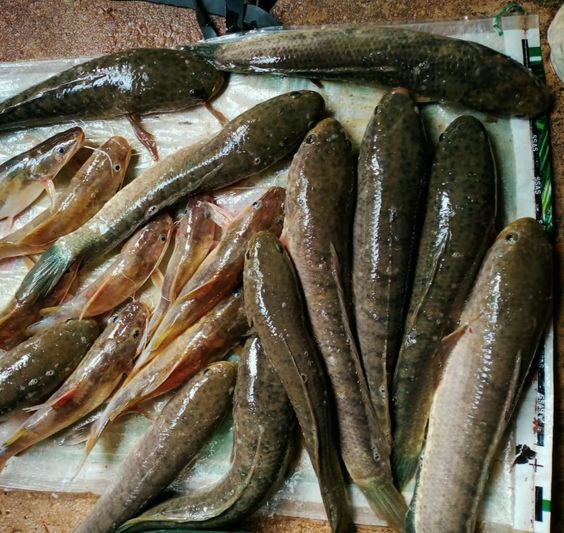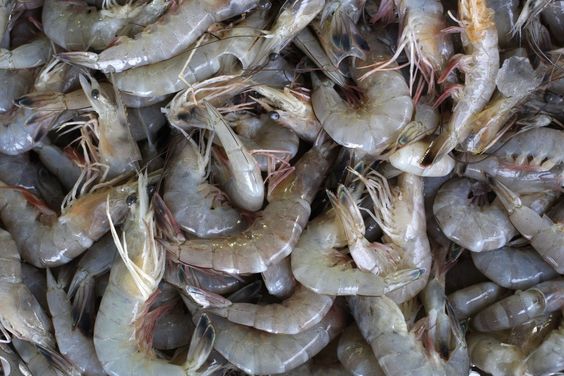Sustainable Catfish Farming: A Responsible Approach for a Long-Lasting Legacy
Sustainable Catfish Farming,As the global population rises, so too does the demand for a reliable, nutritious source of protein. Catfish farming has emerged as a significant player in meeting this demand, offering a delicious and versatile fish with a relatively quick growth cycle. However, traditional, intensive catfish farming practices can have unintended consequences for the environment. This is where the concept of sustainable catfish farming comes in – a holistic approach that prioritizes environmental responsibility alongside economic viability and ethical treatment of the fish themselves.
Contents
Sustainable Catfish Farming
Sustainable catfish farming is a comprehensive philosophy that encompasses all aspects of raising catfish. It aims to minimize environmental impact, promote healthy ecosystems, and ensure the welfare of the fish throughout their lives. Here are some key principles that define this approach:
- Responsible Pond Management: Sustainable catfish farms utilize well-designed ponds with minimal risk of seepage or erosion. This helps to isolate the farm environment from surrounding waterways, preventing the introduction of pollutants or diseases. Additionally, these ponds often incorporate integrated systems, such as using aquatic plants or constructed wetlands, to naturally filter and purify the water.
- Water Quality Management: Maintaining optimal water quality is crucial for the health of the fish and the overall sustainability of the farm. Sustainable practices focus on monitoring and maintaining appropriate oxygen levels, temperature, and pH balance. This often involves implementing strategies like aeration systems and using organic fertilizers to promote healthy bacterial populations that break down waste products.
- Sustainable Feed Practices: A significant portion of a catfish farm’s environmental impact comes from the production of their feed. Sustainable catfish farmers strive to utilize high-quality, environmentally responsible feed sources. This can include plant-based proteins derived from byproducts of other agricultural processes, or even insect protein, which is a rapidly growing and sustainable alternative.
- Disease Prevention: Sustainable catfish farming emphasizes preventative measures to minimize disease outbreaks. This includes maintaining a healthy environment, avoiding overcrowding, and using responsible antibiotic use when absolutely necessary. Strong preventative measures not only benefit the fish but also reduce the need for chemicals and antibiotics, further minimizing environmental impact.
- Humane Treatment: Sustainable catfish farming recognizes the importance of treating fish with respect. This translates to providing them with ample space, a healthy environment, and handling them with care during stocking, feeding, and harvesting.
The Benefits of Sustainable Catfish Farming
By adopting sustainable practices, catfish farms can contribute to a healthier planet and a more responsible food system. Here are some of the key benefits:
- Reduced Environmental Impact: Sustainable catfish farming minimizes water pollution and protects surrounding ecosystems. This translates to cleaner waterways, healthier fish populations, and a reduced carbon footprint compared to traditional farming methods.
- Improved Fish Health: The focus on water quality, disease prevention, and responsible feed sources leads to healthier catfish. This translates to better survival rates, improved disease resistance, and ultimately, a higher quality product for consumers.
- Long-Term Sustainability: By prioritizing responsible resource management, sustainable catfish farming ensures the viability of the industry for future generations. This includes protecting water resources, maintaining healthy soil quality, and ensuring the continued availability of high-quality feed sources.
- Consumer Confidence: Consumers are increasingly interested in the ethical and environmental impact of their food choices. Sustainable catfish farming practices resonate with this growing awareness, leading to increased consumer confidence and brand loyalty.
The Advantages of Choosing Sustainable Catfish
For consumers seeking a healthy, responsible protein source, sustainable catfish offers several advantages:
- Nutritional Value: Catfish is a lean protein source rich in essential nutrients like omega-3 fatty acids, vitamin B12, and selenium. These nutrients contribute to heart health, brain function, and overall well-being.
- Flavor and Versatility: Catfish is known for its mild, slightly sweet flavor that readily absorbs the taste of seasonings and sauces. This versatility makes it a popular choice for a wide variety of dishes.
- Environmental Responsibility: By choosing sustainably raised catfish, consumers can actively support practices that minimize environmental impact and promote healthy ecosystems.
- Animal Welfare: Sustainable catfish farming prioritizes the well-being of the fish, ensuring a humane and respectful approach throughout their lives.

The Greatness of Sustainability: Beyond Environmental Responsibility
While environmental responsibility is a cornerstone of sustainable catfish farming, its greatness extends far beyond that. It encompasses a holistic approach that considers the complete picture:
- Economic Viability: Sustainable practices are not solely focused on environmental concerns; they also prioritize economic viability. By optimizing resource use, reducing waste, and improving fish health, sustainable farms can achieve long-term financial stability. This benefits both the farmers and the overall catfish industry.
- Social Responsibility: Sustainable catfish farming creates a positive social impact by creating responsible jobs and contributing to the economic well-being of rural communities. Additionally, it promotes responsible sourcing practices that ensure fair treatment of workers throughout the supply chain.
- Community Engagement: Sustainable catfish farms can work closely with local communities to promote environmental protection and education. This could involve initiatives such as habitat restoration projects, educational programs for schools, or community outreach events.
The Legacy of Sustainable Catfish Farming
By adopting sustainable practices, catfish farmers are not just ensuring a profitable business; they are contributing to a lasting legacy for generations to come. Here’s how:
- Preserving Our Planet: Sustainable catfish farming helps to protect our planet’s precious resources: clean water, healthy soil, and vibrant ecosystems. This ensures a cleaner environment for future generations and allows wild fish populations to thrive.
- Securing a Sustainable Food Source: The world’s population is projected to continue growing, creating an increased demand for protein. Sustainable catfish farming offers a reliable, efficient, and environmentally responsible way to meet this demand, ensuring access to nutritious food for future generations.
- Promoting Innovation: The pursuit of sustainable practices fosters innovation and technological advancements in the aquaculture industry. This includes research on sustainable feed sources, efficient water management systems, and disease prevention strategies. These advancements can benefit not only catfish farming but also broader aquaculture practices, contributing to a more sustainable food system overall.
Challenges and Opportunities for Sustainable Catfish Farming
While sustainable catfish farming holds immense potential, it’s important to acknowledge the challenges that exist:
- Consumer Awareness: While consumer interest in sustainable food choices is rising, awareness about sustainable catfish farming practices may not be as widespread. Educating consumers on the benefits and encouraging them to seek out sustainably sourced catfish is crucial.
- Market Competition: Traditional, intensive catfish farming methods may offer lower initial costs, creating competition for sustainably raised catfish. However, as consumer awareness grows and the long-term benefits of sustainable practices become more apparent, the market is likely to shift towards sustainable options.
- Research and Development: Continuous research and development are vital for advancing sustainable catfish farming practices. This includes finding alternative feed sources, optimizing water management systems, and developing new disease prevention techniques.
Sustainable catfish farming offers a path towards a brighter future. By prioritizing environmental responsibility, animal welfare, and economic viability, this approach ensures a reliable source of nutritious protein while safeguarding our planet’s resources. Through continuous innovation, consumer education, and industry collaboration, sustainable catfish farming has the potential to become the norm, leaving a legacy of environmental stewardship and responsible food production for generations to come.






